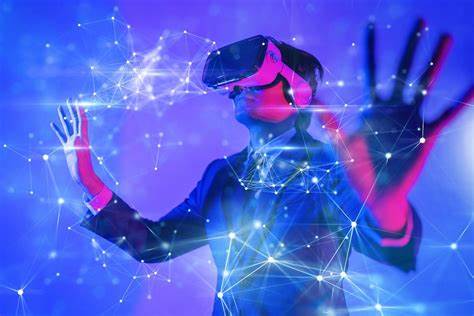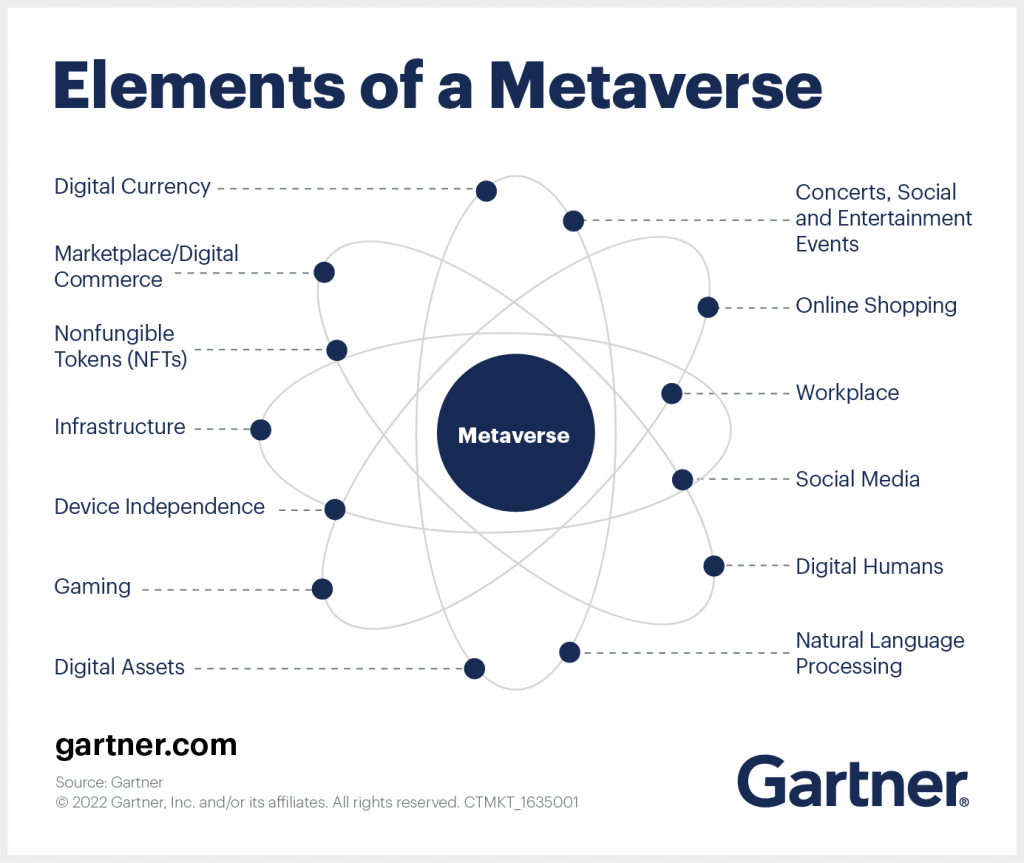
What is Metaverse?
Enterprise architecture and technology innovation leaders must explore and understand emerging Metaverse technology to facilitate adoption and implementation.
In short:
- The Metaverse is a collective virtual open space, created by the convergence of virtually enhanced physical and digital reality. It is physically persistent and provides enhanced immersive experiences.
- Activities that take place in isolated environments (buying digital land and constructing virtual homes, participating in a virtual social experience, etc.) will eventually take place in the Metaverse.
- The adoption of Metaverse technologies is still at an early stage, so business leaders should limit their investments there.
Technology innovation leaders need to identify, examine and track emerging technologies to help business leaders develop new products, transform the business or mitigate risks. The Metaverse is one such technology that’s impact upon driving strategic business innovations you need to proactively consider.
“Metaverse will allow people to replicate or enhance their physical activities. This could happen by transporting or extending physical activities to a virtual world or by transforming the physical one,” says Marty Resnick, VP Analyst at Gartner. “Although the goal of a Metaverse is to combine many of these activities, there are currently many individual Metaverses with limited functionality,”
Download Now: 2021-2023 Emerging Technology Roadmap
What is a Metaverse?
Gartner expects that by 2026, 25% of people will spend at least one hour a day in the Metaverse for work, shopping, education, social media and/or entertainment. But what exactly is a Metaverse?
It is a collective virtual space, created by the convergence of virtually enhanced physical and digital reality. In other words, it is device-independent and is not owned by a single vendor. It is an independent virtual economy, enabled by digital currencies and nonfungible tokens (NFTs).
A Metaverse represents a combinatorial innovation, as it requires multiple technologies and trends to function. Contributing tech capabilities include augmented reality (AR), flexible work styles, head-mounted displays (HMDs), an AR cloud, the Internet of Things (IoT), 5G, artificial intelligence (AI) and spatial technologies.
To understand the concepts of a Metaverse, think of it as the next version of the Internet, which started as individual bulletin boards and independent online destinations. Eventually these destinations became sites on a virtual shared space — similar to how a Metaverse will develop.
Why is there hype around Metaverse?
There is a lot of excitement around Metaverse, much of it driven by technology companies preemptively claiming to be Metaverse companies, or creating Metaverses to enhance or augment the digital and physical realities of people. Moreover, activities that currently take place in siloed environments will eventually take place in a single Metaverse, such as:
- Purchasing outfits and accessories for online avatars
- Buying digital land and constructing virtual homes
- Participating in a virtual social experience
- Shopping in virtual malls via immersive commerce
- Using virtual classrooms to experience immersive learning
- Buying digital art, collectibles and assets (NFTs)
- Interacting with digital humans for onboarding employees, customer service, sales and other business interactions
It is expected that a Metaverse will provide persistent, decentralized, collaborative and interoperable opportunities and business models that will enable organizations to extend digital business.

What are the business opportunities of a Metaverse?
Today there are many individual use cases and products, all creating their own versions of a Metaverse. Opportunities across multiple industries include:
- Higher education, medical, military and other types of trades can deliver a more immersive learning experience. They don’t need to create their own infrastructure, as the Metaverse will provide the framework.
- Virtual events, having gained popularity over the last two years, can now present more integrated offerings.
- Retail can extend its reach to an immersive shopping experience that allows for more complex products.
- Enterprises can achieve better engagement, collaboration and connection with their employees through virtually augmented workspaces.
- Social media can move to the Metaverse, where users can interact through three-dimensional avatars.
The adoption of Metaverse technologies is still nascent and fragmented, and we recommending refraining from heavy investments in a specific Metaverse. It is still too early to determine which investments will be viable in the long term, and the priority should be to learn, explore and prepare for a Metaverse without going overboard with implementation, based on a few use cases.
Recommendations for technology innovation leaders
- Develop digital business strategies that leverage the built-in infrastructure and participants of the Metaverse.
- Lead idea and innovation management that focuses on new opportunities and business models with the Metaverse.
- Identify the unique technology risk, privacy and security implications in this new persistent and decentralized environment.
- List the outcomes, opportunities and obstacles the Metaverse entails in the form of an emerging-technology wheel.
Source: What is Metaverse?


